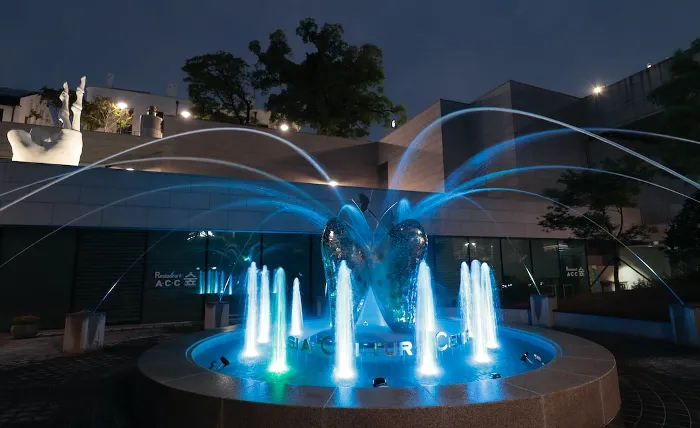Basic Water Feature Illumination

When faced with the challenge or opportunity to light a jet in a fountain some fundamental elements will need to be considered and implemented. First, if you want your project to look clean, and not cluttered, there should be an underwater junction box close by to provide electrical power to your light. This is assuming that the project is in the design stage. If not, then a power cord over the wall is your only option. Freestanding underwater lights, by NEC code, can only have 9 feet of exposed cord in the water which puts a limit as to where that light can be placed. Place the underwater light fixture in a position that allows it to shine directly onto the vertical jet. The light source should be positioned below the jet and roughly a foot out from the jet. Aim the light at an upward angle towards the vertical jet. Some experimenting will be needed to find that angle to give the most visually appealing illumination. Once the light fixture is installed, observe the lighting effect and adjust the angle if necessary. Pay attention to the brightness, color, and coverage of the light on the jet. You may need to experiment with different angles and distances to achieve the desired illumination. Keep in mind that the nature of water is to bend a light beam. For a more subtle illumination effect lower the light further below the water. The reverse is true, for the most light on the stream of water bring the light closer to the water's surface. Here is a technicality that you must be aware of when placing a light at or above the water level, if the light has a UL underwater designation the lens must the covered by water. If the light has a UL submersible rating that light can operate underwater or out of the water. Going for the most light on the vertical jet along with the most color intensity, use a submersible-rated light. While experimenting with the angle of the light there is another anomaly that you must be aware of and that is when the light angle underwater approaches 45 degrees off of vertical the water acts light a mirror. You will light the pool floor rather than the vertical jet. This situation is more likely to occur illuminating a bowl or sculpture.
The picture below shows that placing the light at or above water level places the maximum light toward the vertical element. In this case, the bubbler jet creates a highly aerated mound of water that captures the light giving that pop. The center jet has 3 lights under the water about a foot from the jet, aiming toward the middle of the stream. The light hitting the stream is diluted or refracted by the water giving a more subtle effect.
The development of the LED (light-emitting diode) is a game changer for fountain and swimming pool lighting. The light assemblies have gotten smaller, lighter in weight, much easier to maintain, consume much less energy, and have become more widely available. Generally, the LED lights used in fountains and swimming pools are submersible rated allowing them to operate out of the water or under the water. Many LED underwater lighting systems offer control options, including remote control or smartphone apps, allowing you to adjust brightness, color, and even create dynamic lighting effects. LED lights offer a wide range of color options, some LED systems even come with programmable color-changing options, enabling you to customize the lighting according to your preference.
Below is an example of color that can be achieved with LED lighting. In this installation, a "ring light" is utilized to envelope the stream of water. What typically would take two or three lights to bathe the water stream with light is now accomplished with a single fixture. Note that these lights are at or slightly above the water level, implying they are submersible-rated lights, providing the full benefit of the color intensity and impact.
Another example of LED color intensity, this time utilizing 2 submersible lights spaced within 1 foot of the jet. The advantage of lighting through the atmosphere rather than water is revealed in that, with the selection of a flood-type light source, complete illumination of the water effect can be realized.
A search on the internet will divulge a host of LED fixtures designed and intended for underwater use. If you are lighting a jet in a public space or private residence you need to be aware of the code requirements. Any light that operates over 30 volts d.c. needs to be UL or ETL Listed along with the underwater junction box, transformer, and power supply. The beauty of most LED lights is that they operate on 12 or 24-volt d.c. power, leaving the power supply and junction box to be verified. Do your research on the light and support products you intend to use, and verify the third-party underwater or pool listing. Consider safety guidelines when working with underwater lighting. Ensure that the fixtures are properly rated for underwater use, installed by a qualified professional if needed, and comply with any applicable electrical codes and regulations.
Underwater lighting can create a stunning visual effect, enhance the overall ambiance and extend the outdoor visual experience past sunset, into the night, and all night long if required such as in public spaces.



